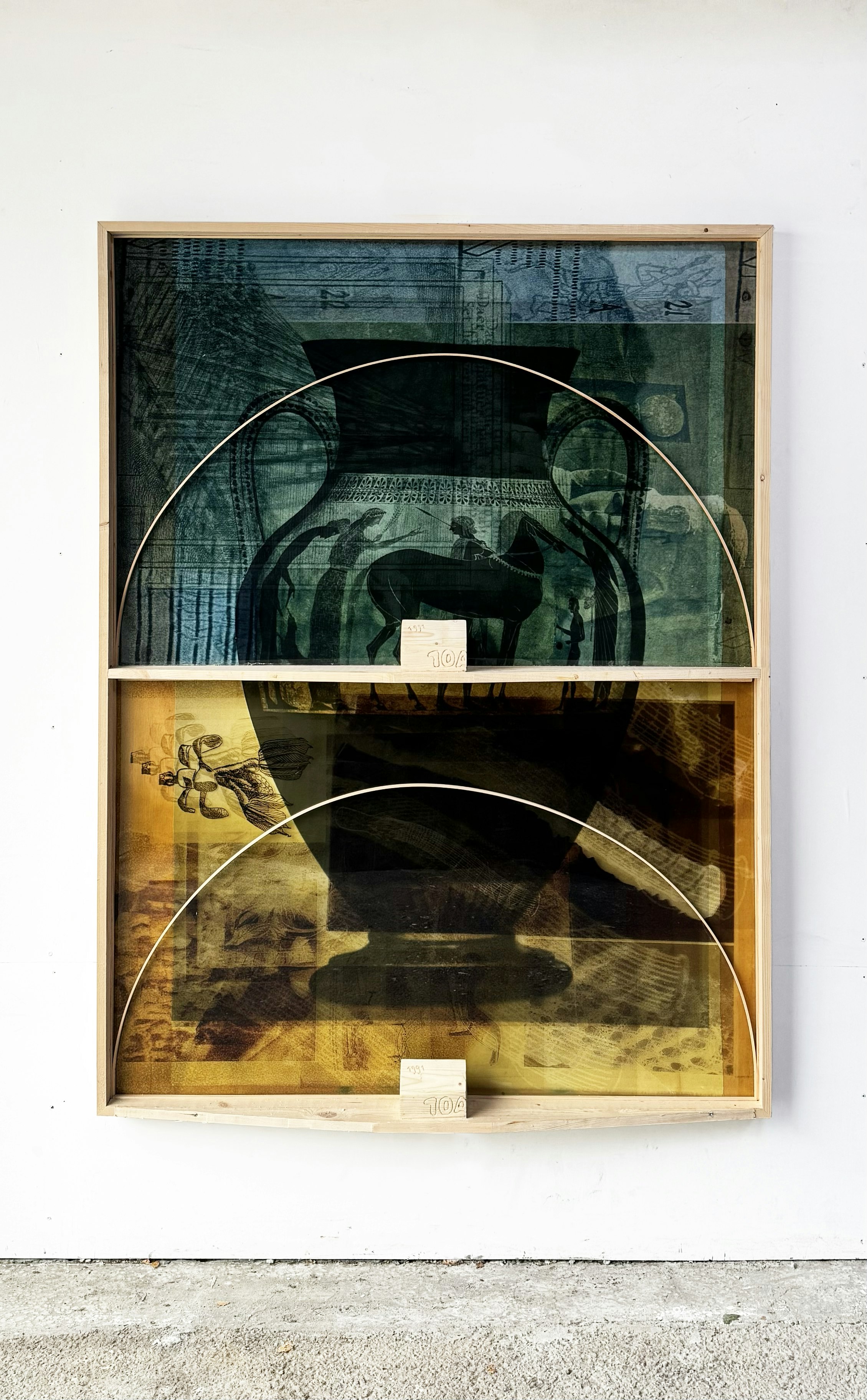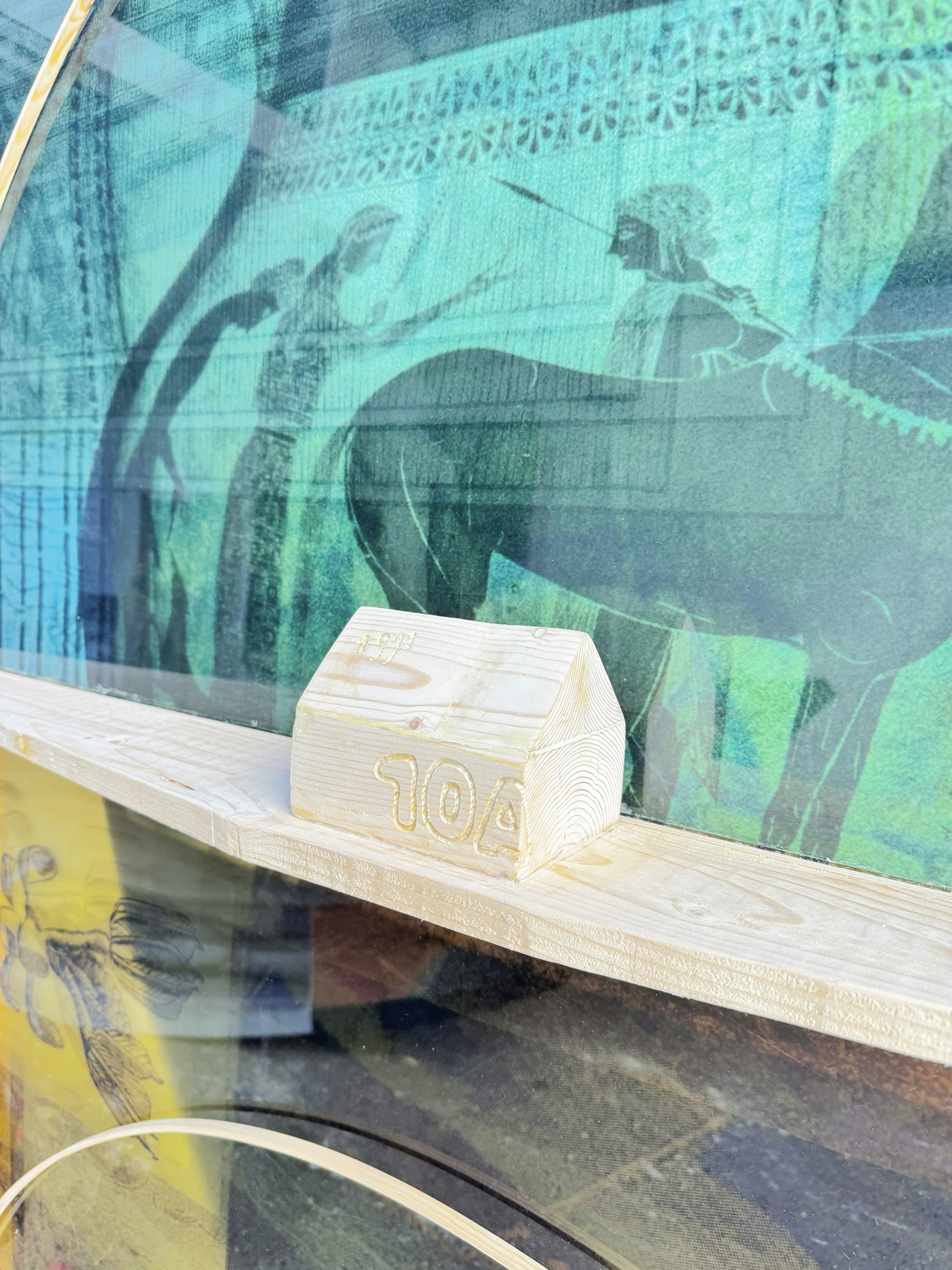Full house, empty vessel
2025- print on cotton, print on Perspex, wood- 164x124
We can look at history as a fabric. A fabric in which each thread represents a historical episode, a story, an anecdote, etc. All of this together forms the whole that presents itself to us as history. Upon closer inspection, we will see that some threads are thicker than others, or more noticeable because of their color. Not all threads in the fabric are equal; some are ready to break, others are reinforced.
In the current debate, it is striking that there is a need to add threads that have not yet been incorporated into this fabric. Threads about women, threads about minorities, threads about groups of people who have been unheard for too long and often still are. Unfortunately, I have the impression that these stories are often embroidered onto the existing fabric as an embroidery patch rather than added to it. This means that this patch can also be removed. To add a thread to the existing fabric, space must first be created. The threads need to be unraveled; some threads may need to be removed, others reinforced. I consider creating this necessary space in the fabric we call history a crucial part of my work.

